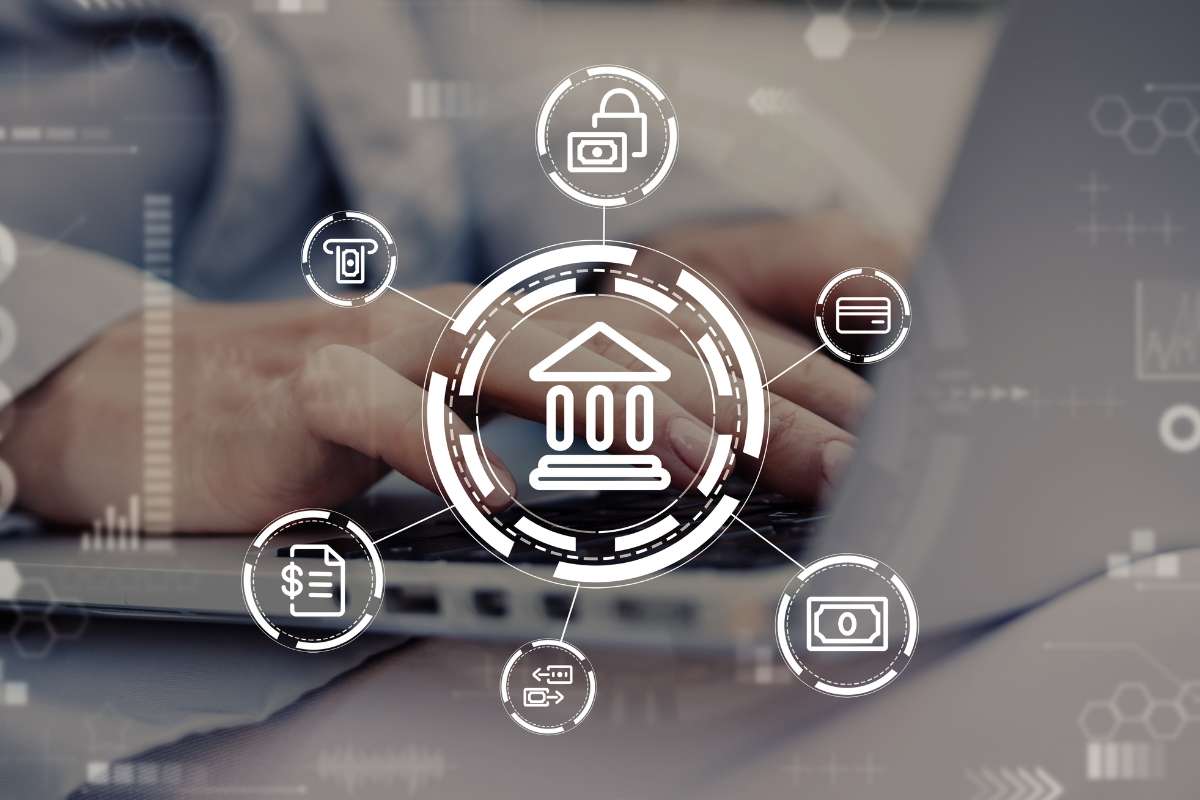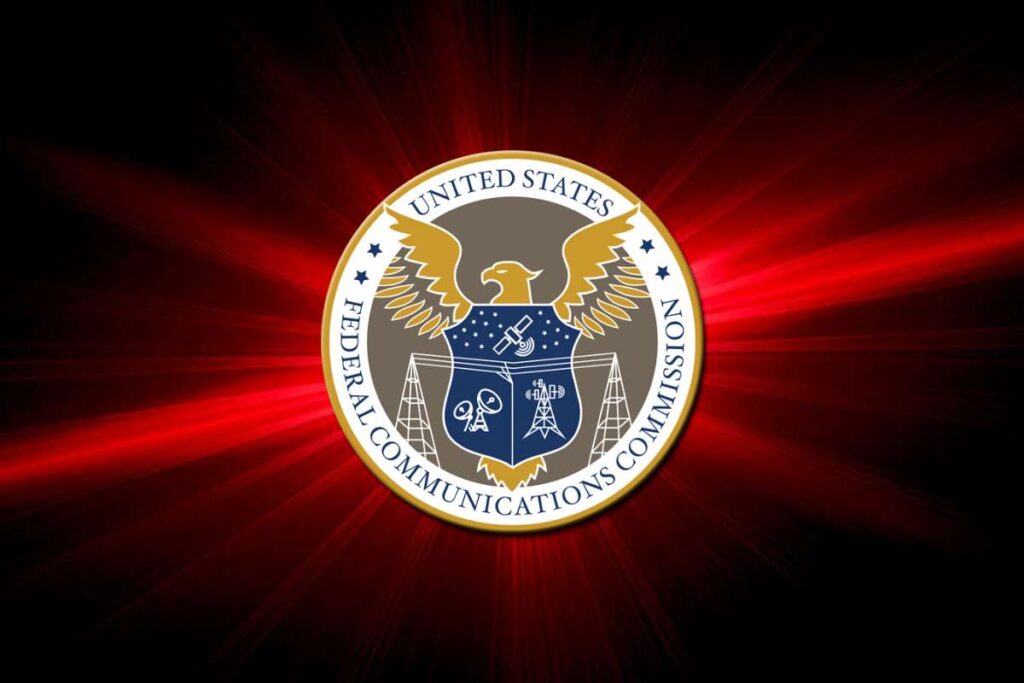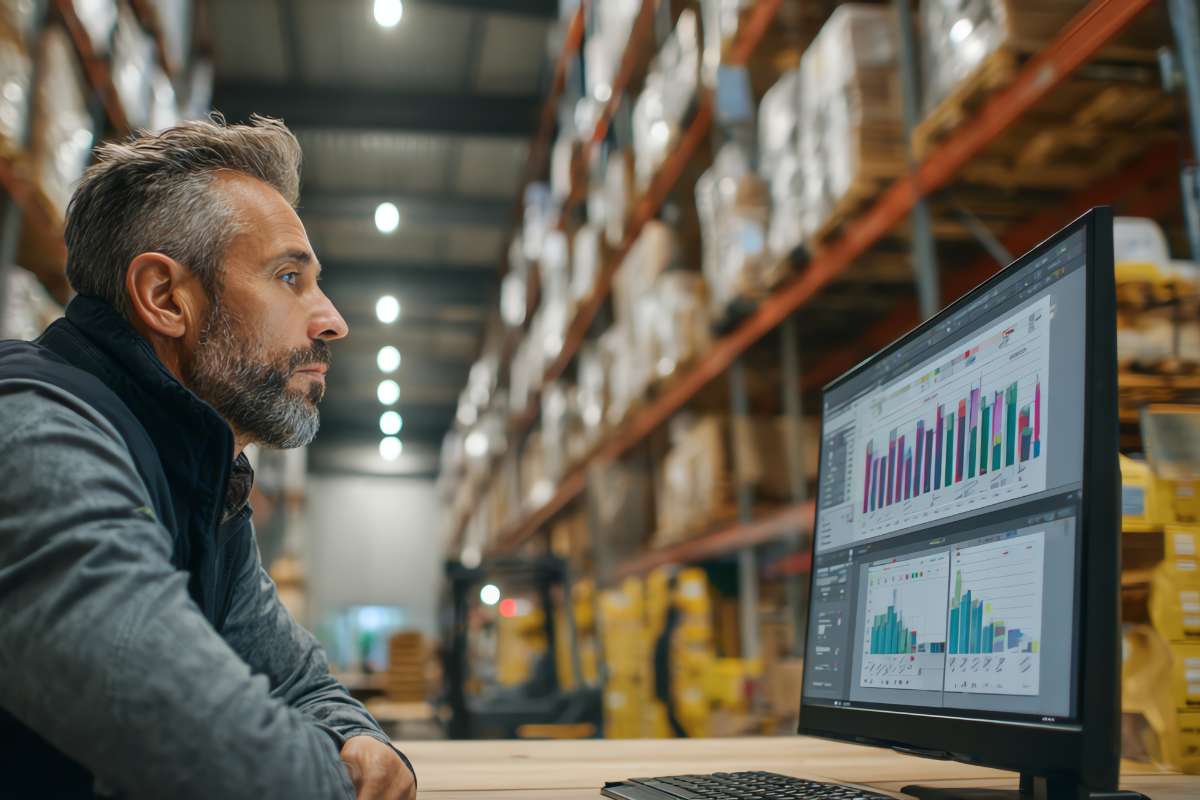Banking at your fingertips, but safety first
Online banking has helped us to manage our finances, especially after Covid-19. The online system has improved the customer’s convenience and accessibility. Though there are many advantages of online banking, there are certain risks that come with it. In the latest incident of Finastra breach sensitive customer and internal data was leaked. Such incidents remind us that using safe online banking techniques is crucial for us to safeguard our personal and financial information. Various techniques help hackers to make online banking unsafe, some of them are
phishing Scams and public Wi-Fi vulnerabilities. Using strong passwords, adopting two-factor authentication techniques, and preventing the usage of suspicious links will keep your transactions and sensitive data secure in this growing digital banking era.
Table of ontents
Importance of SAFE Online Banking
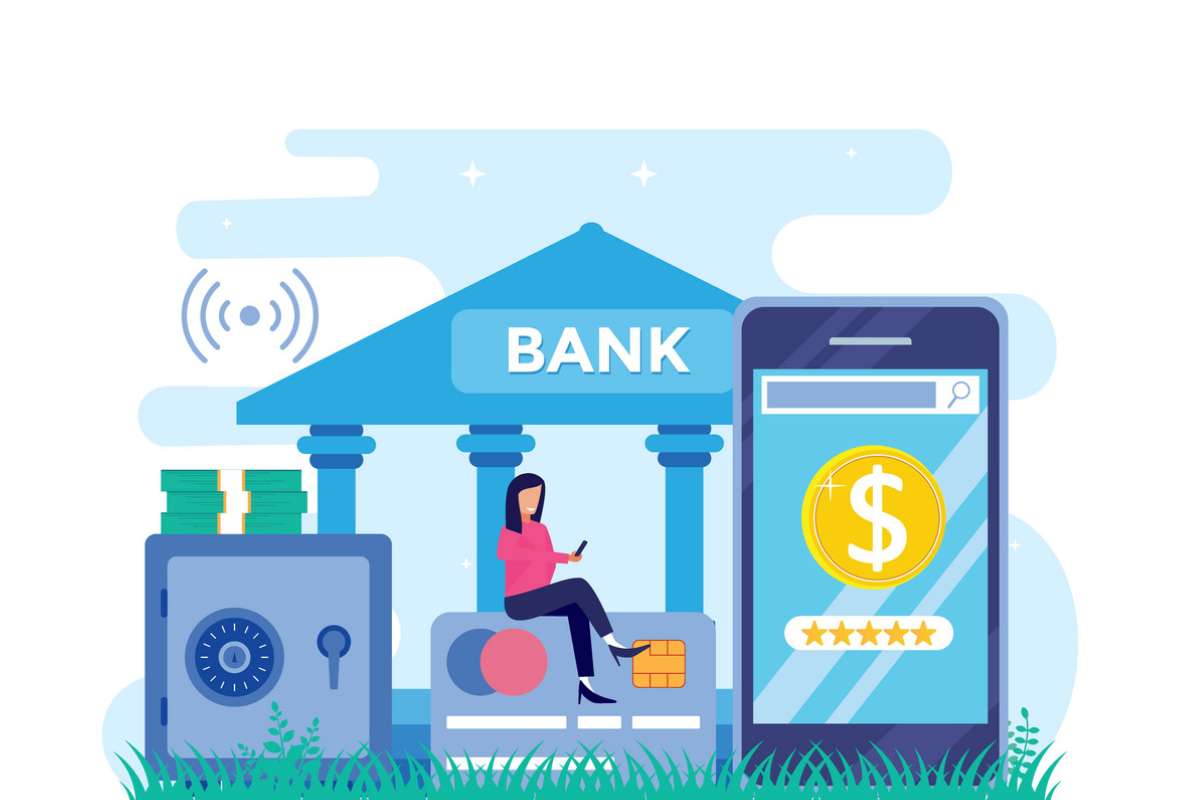
SAFE online banking is the ‘need of the hour to protect your financial well-being and prevent yourself from fraud. The rise of digital transactions has made it necessary to take necessary steps to make online banking safer than you might think. Banks use measures such as high-end encryption, two-factor authentication, and device authentication to keep your data safe. As the banking threats are increasing so are the technologies to safeguard one’s financial information.
These technologies are used to develop several techniques to make it difficult for cybercriminals to access it. In the next section, we will understand the tips for safe online banking that will help you avoid financial loss, reduce the risk of fraud, and enjoy a secure digital banking experience
Tips for safe online banking
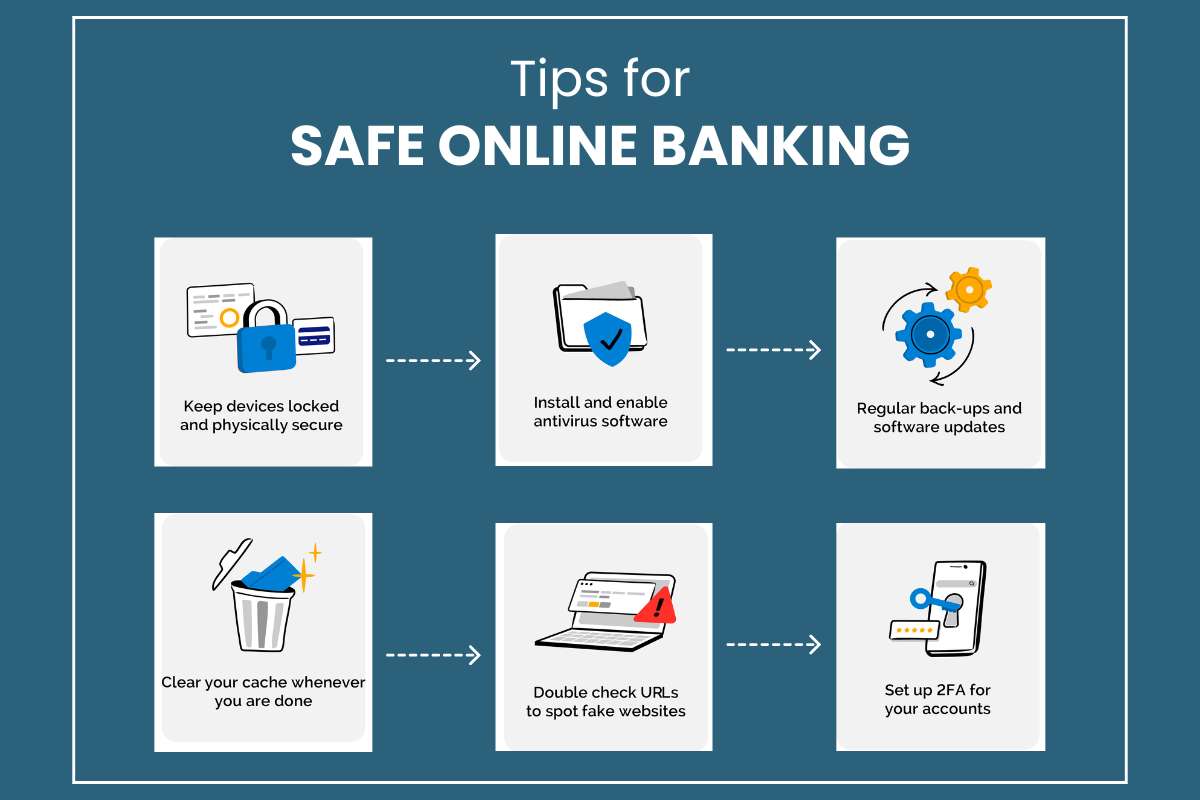
1. Use Strong and Unique Passwords
Avoid using simple or sequential passwords as they can be easily guessed by hackers
Try to create a complex password, you can use a mix of uppercase and lowercase letters, numbers, and special characters. Reusing passwords can be avoided across multiple
platforms. You can also consider using a password manager to generate, store, and protect
unique passwords.
2. Enable Two-Factor Authentication (2FA)
Two-factor authentication adds an extra layer of security as it requires a second form of verification, such as a code sent to your phone or email. Even if a hacker obtains your password, they won’t gain access without this additional step. Make sure your bank offers and supports 2FA for your account.
3. Avoid Public Wi-Fi for Banking Transactions
Public Wi-Fi networks at coffee shops, airports, and malls are not safe. Hackers can get your data and your account can get into trouble. If you want to use public Wi-Fi, you should connect your device through a trusted virtual private network (VPN). A VPN encrypts your data and keeps your online activity private.
4. Stay Alert to Phishing Attempts
Phishing scams are one of the most common threats in online banking. Fraudsters send fake emails or messages pretending to be your bank, often including links to malicious websites. Never click on links in uninvited emails or messages. Instead, visit your bank’s website directly or use its official app. Remember, your bank will never ask for sensitive information like your password through email or text.
5. Sign Up for Account Alerts
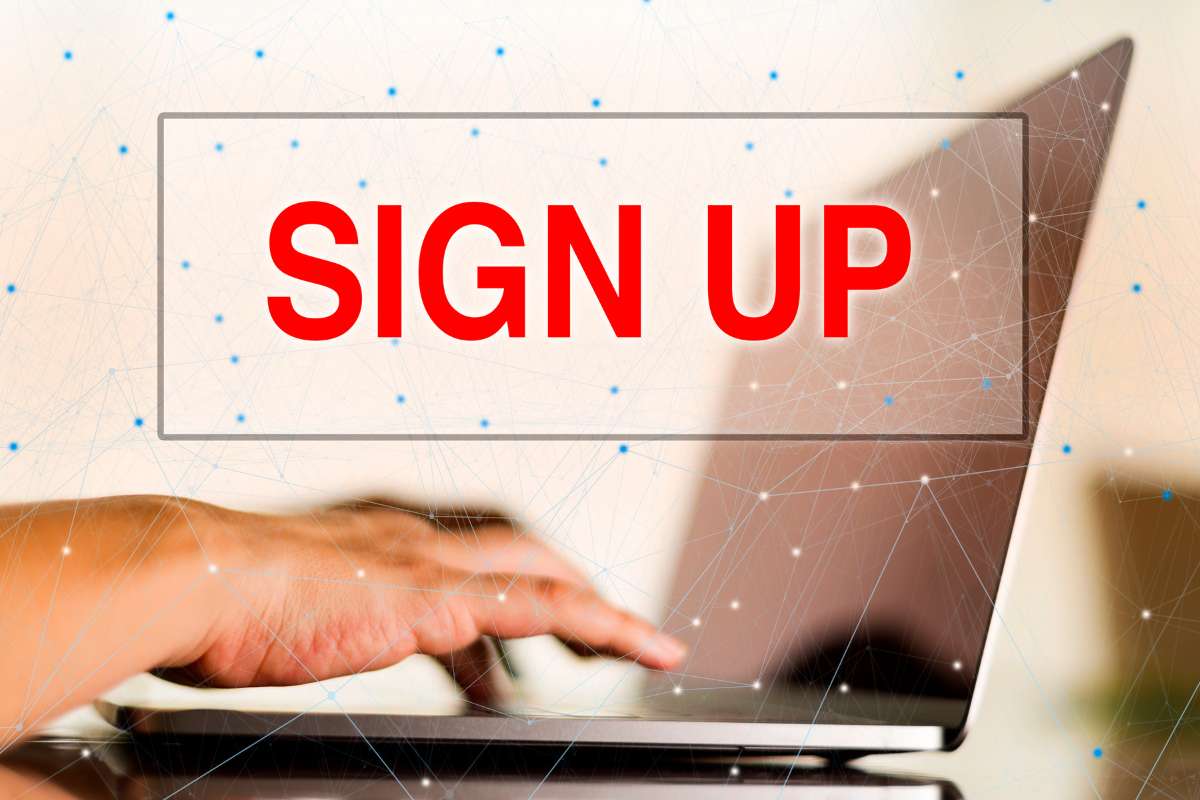
Activate email or text alerts for your bank account to stay informed about account activities, such as transactions, login attempts, or changes in account details. Alerts allow you to detect suspicious activities early and take immediate action to secure your account.
6. Keep Devices and Apps Updated
Make sure your devices and banking apps are running the latest software versions. Regular updates often include critical security patches that protect against new threats. Set your devices to auto-update whenever possible, reducing the risk of vulnerabilities.
7. Access Trusted Websites and Apps Only
Before logging in to your bank account, ensure the website’s URL starts with “https” and displays a padlock icon. This indicates a secure connection. When using apps, download only from official app stores and verify the developer’s credibility. Avoid clicking on unknown links or downloading files from unverified sources.
8. Never Share Financial Details
Protect sensitive information like your bank account details, PINs, and passwords. Share your banking credentials only with your bank’s secure channels and avoid disclosing them to anyone else. Also, shield your PIN while entering it at ATMs or payment terminals, and avoid storing sensitive data on your phone or wallet.
Bonus Tip: Monitor Your Accounts Regularly
Take a look at your bank statements and online transaction history regularly. Early detection of unauthorized transactions allows you to notify your bank and reduce damage quickly.
By following these tips for safe online banking, you can reduce the risk of cyber threats and enjoy digital finances. Always stay vigilant, and be proactive in safeguarding your financial future.
Frequently Asked Questions
1. What are the top tips for using online banking safely?
You can enjoy safe online banking by using strong passwords, trusted devices, and secure URLs. Protect your accounts with antivirus software and stay away from phishing scams. Set up account alerts to monitor activity and catch unauthorized transactions instantly!
2. What is the risk of online banking?
Online banking has benefits and risks, some of the risks are
- Phishing
- Data breaches
- Identity theft
- Fraudulent apps
Always protect your information, monitor accounts, and be cautious to enjoy safe banking.
3. How to stay safe banking online?
To enjoy secure digital banking always use secure Wi-Fi, avoid saving login details, and keep your software updated. Some of the best Tips for safe online banking include using strong passphrases and monitoring accounts regularly. Stay cautious of phishing emails and access accounts from trusted devices.
4. What is the key safety guideline when internet banking?
The key safety guideline for Internet banking is using multi-factor authentication (MFA) for security. This adds a layer of protection so that the accounts are not compromised even with leaked passwords. Avoid using public Wi-Fi and regularly update passwords for extra safety.
Conclusion
While online banking is important, it is necessary to be aware of the risks involved. By implementing the tips for safe online banking mentioned above you can strengthen your protection. Additionally using secure networks, and regularly monitoring your accounts can help you to stay alert to phishing scams, and reduce the chances of falling victim to cyber threats. The safety measures will ensure that your financial transactions and personal information remain secure and you can enjoy the benefits of digital banking with peace of mind.

